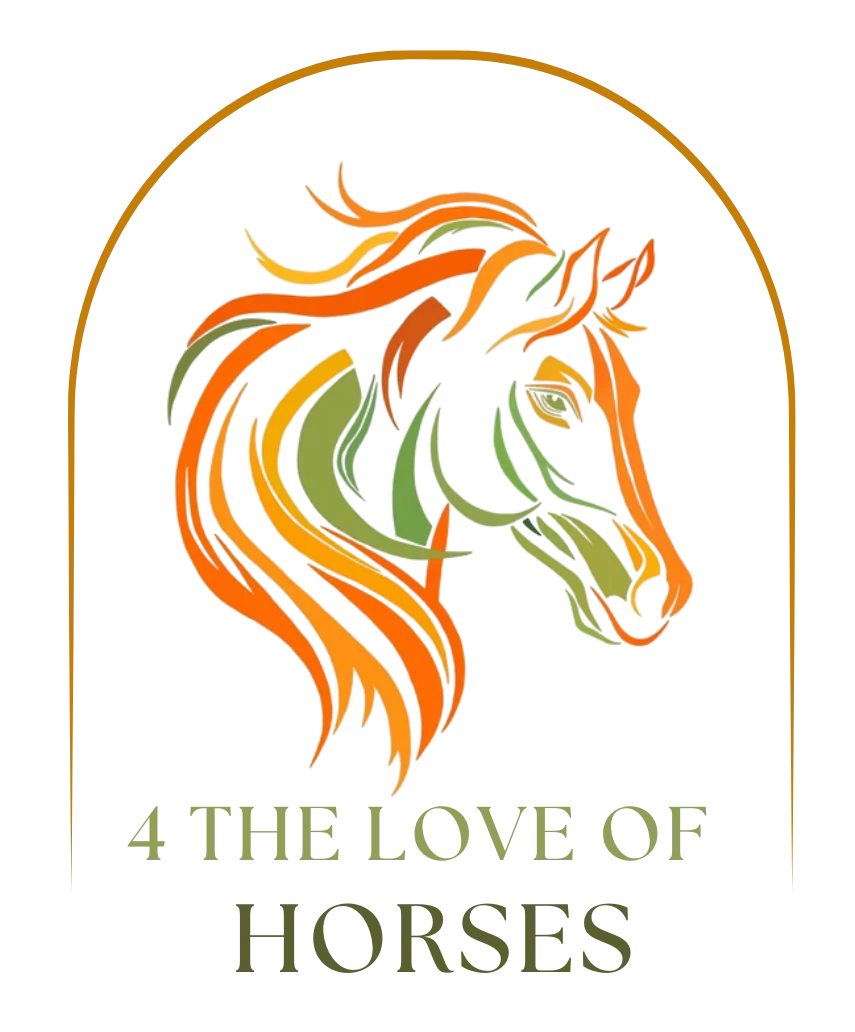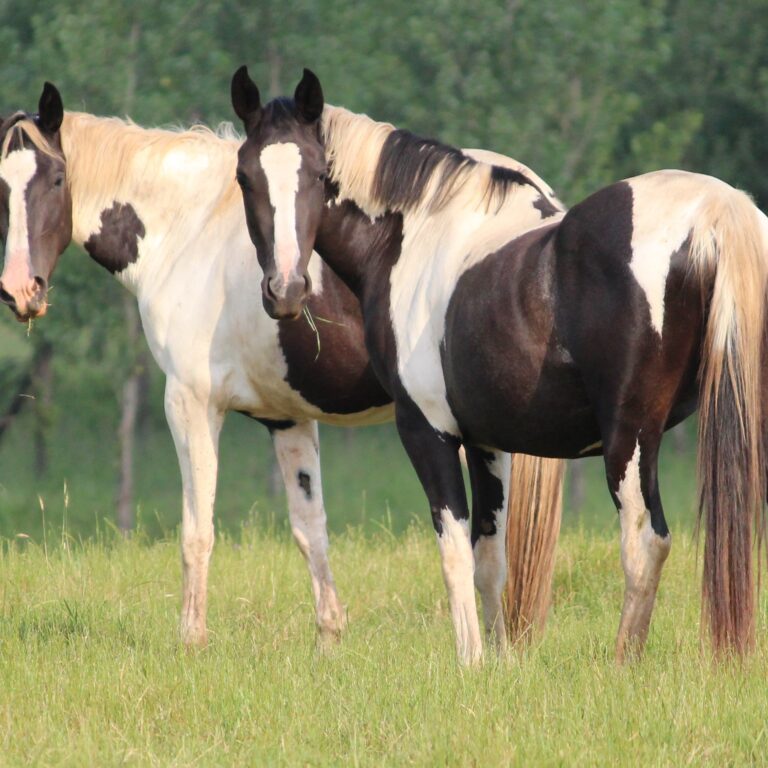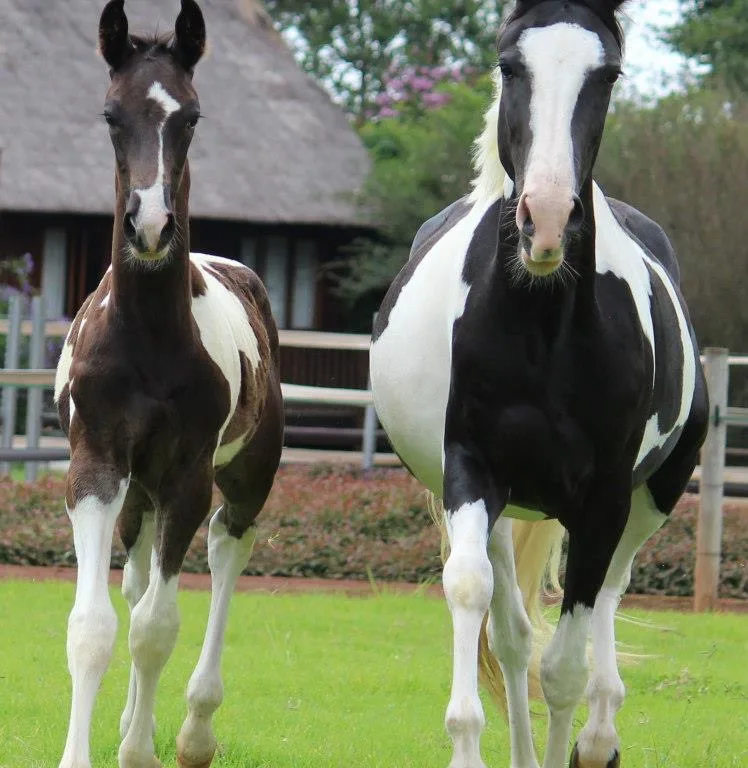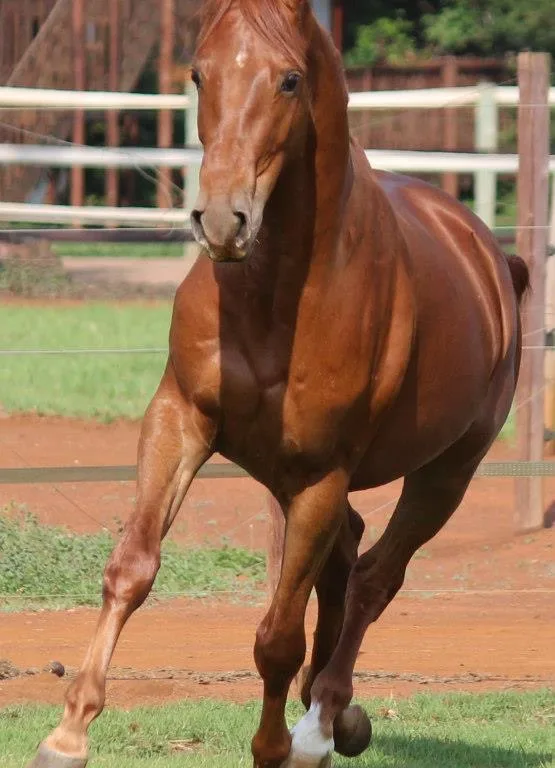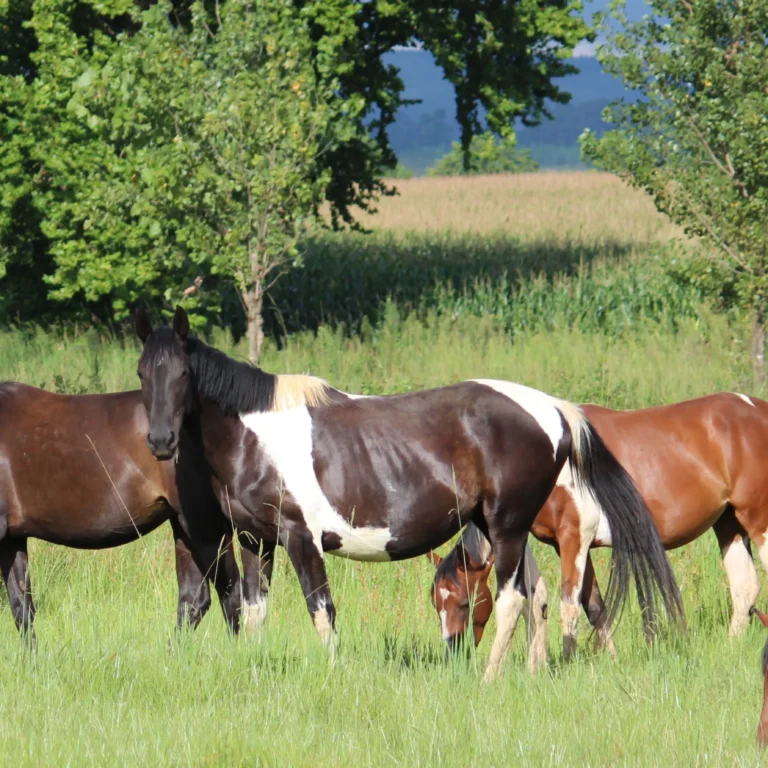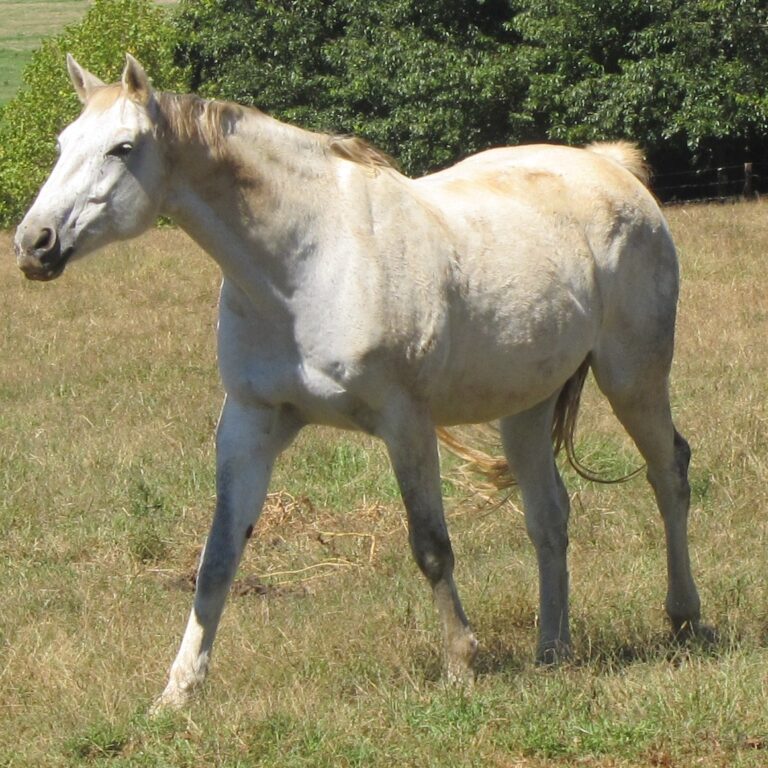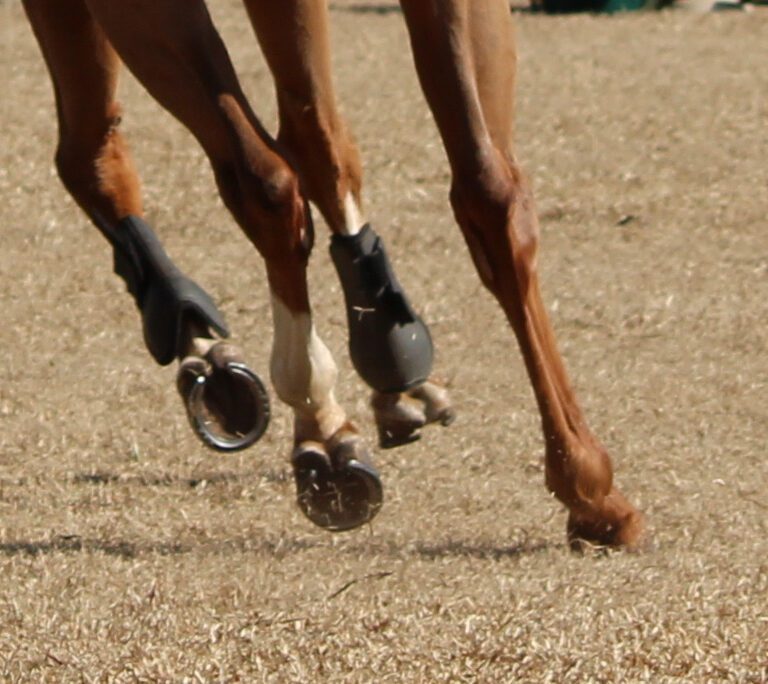The Art of Equine Enrichment: Nurturing Mind and Body for a Thriving Horse
Horses, revered for their grace and strength, require more than just basic care; they thrive when their minds and bodies are nurtured through a thoughtful approach known as equine enrichment. This concept goes beyond traditional care routines, recognizing that horses, much like humans, benefit from mental and physical stimulation to lead fulfilling lives.
Equine enrichment is a holistic approach to horse care that acknowledges the need for mental and physical engagement. It involves providing horses with activities, environments, and social interactions that encourage natural behaviors, mental stimulation, and physical exercise. Enrichment aims to create an environment that mirrors the conditions in which horses would thrive in the wild, promoting a sense of well-being and preventing boredom-related issues.
Whether it’s introducing novel objects, incorporating interactive toys, or establishing a varied and stimulating living space, equine enrichment seeks to enhance a horse’s quality of life by addressing its cognitive, emotional, and physical needs.
Mental and physical well-being are inseparable facets of a horse’s overall health. Horses, by nature, are intelligent and social beings with intricate emotional lives. The failure to address their mental needs can lead to stress, anxiety, and undesirable behaviors.
Similarly, a lack of physical exercise and engagement can result in health issues, such as obesity or musculoskeletal problems. Both mental and physical aspects are interconnected, influencing each other in a delicate balance that, when maintained, contributes to a horse’s thriving state.
As caretakers, understanding and prioritizing the mental and physical well-being of horses is pivotal for responsible ownership. Equine enrichment serves as the bridge between conventional care and a comprehensive approach that not only meets the basic needs of horses but also allows them to flourish mentally and physically, resulting in happier and healthier equine companions.
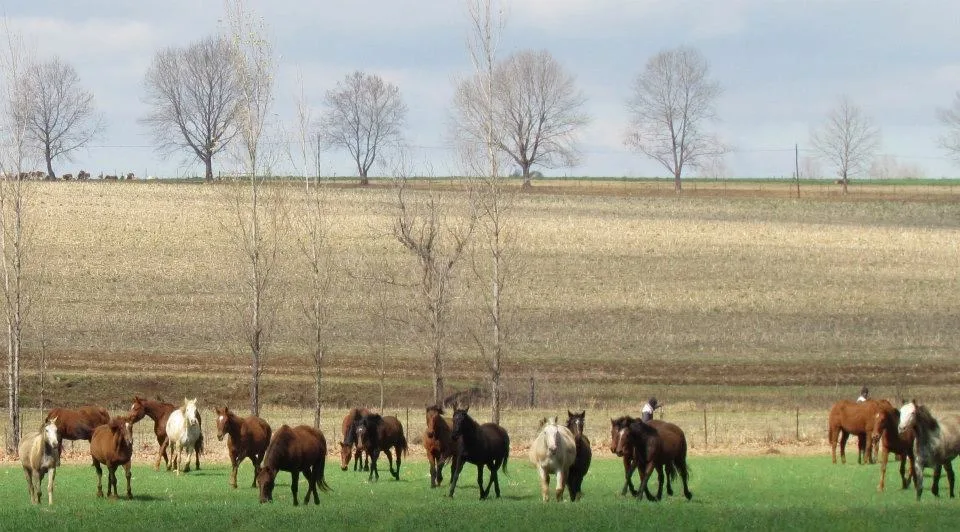
The Mind-Body Connection in Horses
Understanding the intricate relationship between a horse’s mental and physical health is essential for providing comprehensive care that goes beyond the basics. The well-being of these special animals is not divided into distinct categories but is rather a harmonious blend of mental and physical vitality.
The interconnectedness of mental and physical health in horses
Horses possess a remarkable mind-body connection where mental and physical aspects are intricately intertwined. The mental state of a horse significantly influences its physical well-being, and vice versa. When a horse is content, stimulated mentally, and free from stress, it is more likely to exhibit positive physical health indicators. Conversely, physical discomfort or health issues can manifest as behavioral changes and impact the horse’s mental state.
Understanding this connection allows caretakers to adopt a holistic approach to horse care. Mental stimulation contributes to a horse’s cognitive development and emotional stability, while physical activities maintain muscle tone, joint flexibility, and cardiovascular health. A balanced approach that addresses both aspects ensures a horse’s overall well-being and longevity.
The impact of stress and boredom on a horse’s overall well-being
Stress and boredom, if left unaddressed, can have profound implications for a horse’s holistic health. Horses are creatures of habit, and any deviation from their natural environment or routine can lead to stress. Common stressors include changes in surroundings, lack of social interaction, or insufficient mental stimulation.
Stress, in turn, can manifest physically, contributing to issues such as digestive problems, weakened immune responses, and lameness. Additionally, boredom, often underestimated, can result in stereotypical behaviors like cribbing or weaving, signaling a horse’s attempt to cope with monotony.
To foster a thriving equine companion, it is crucial to recognize the signs of stress and boredom and take proactive measures. Equine enrichment, with its focus on mental and physical engagement, serves as a preventive strategy, mitigating the impact of stressors and banishing boredom. By creating an environment that stimulates a horse’s mind and body, caretakers can ensure a healthier, happier, and more balanced equine partner.

Understanding Equine Behavior
To truly nurture and care for horses, it’s essential to comprehend their natural behaviors. Horses are prey animals with a strong herd instinct, and their behaviors are deeply rooted in survival mechanisms. In the wild, horses spend a significant portion of their day grazing, socializing, and engaging in various activities to ensure their well-being.
Understanding natural horse behavior involves recognizing their social structure, communication methods, and typical daily routines. Horses are social animals that thrive on companionship, and their communication involves body language, vocalizations, and subtle cues. Grazing is not just a nutritional activity for them but also a form of mental stimulation and exercise.
The role of enrichment in simulating natural behaviors
Equine enrichment serves as a bridge between domestication and the fulfillment of a horse’s instincts. In captivity, horses often face limitations in expressing their natural behaviors, leading to stress and behavioral issues. Enrichment aims to recreate elements of the horse’s natural environment, allowing them to exhibit instinctual behaviors that contribute to their well-being.
For instance, providing opportunities for grazing or using slow feeders can simulate the natural feeding behavior of horses, preventing boredom associated with limited access to forage. Introducing toys and structures that encourage movement and exploration aligns with a horse’s natural curiosity and need for physical activity. Additionally, promoting social interactions through appropriate herd dynamics or companionship helps fulfill the social aspect of their nature.
Equine enrichment, therefore, is a proactive strategy to ensure that horses can express their innate behaviors, reducing stress and promoting mental and physical health. By understanding and catering to their instincts, caretakers can create an environment where horses can thrive and find contentment, even within the confines of domestication.

Mental Stimulation for Horses
Horses, with their inquisitive and intelligent nature, thrive when mentally engaged. Incorporating a variety of activities and toys into their routine can offer the mental stimulation they need. Here are some effective strategies:
- Puzzle Feeders: Provide feed-in puzzle feeders or slow-feeders to encourage problem-solving and slow down the feeding process, mimicking natural grazing behavior.
- Hanging Treat Balls: Suspend treat-filled balls in the stable or pasture, encouraging horses to use their tongues and hooves to access the treats, providing both mental and physical engagement.
- Novel Objects: Introduce new and safe objects into the environment, such as colorful balls, traffic cones, or sturdy play structures. Horses are naturally curious and investigating these objects can be mentally stimulating.
- Trail Riding and Obstacle Courses: Vary the riding routine by incorporating trail rides or setting up obstacle courses. Negotiating different terrains and navigating obstacles not only engages the horse’s mind but also adds variety to their physical exercise.
- Clicker Training: Utilize positive reinforcement techniques like clicker training to teach horses new commands or tricks. This fosters a bond between the horse and handler while providing mental challenges.
- Mirror Installations: Horses are known to be intrigued by their reflections. Installing horse-safe mirrors in the stable or pasture can stimulate their curiosity and provide mental engagement.
The benefits of keeping a horse’s mind engaged
Keeping a horse’s mind engaged through mental stimulation is integral to their overall well-being, offering a range of benefits:
- Prevents Boredom: Boredom can lead to undesirable behaviors such as cribbing or weaving. Mental stimulation prevents boredom, reducing the likelihood of these vices.
- Reduces Stress: Engaged horses are less likely to experience stress. Mental stimulation helps divert their attention from potential stressors, contributing to a calmer and happier disposition.
- Enhances Learning: Horses are intelligent animals capable of learning and adapting. Regular mental stimulation enhances their cognitive abilities, making them more receptive to training and new experiences.
- Physical Health: Mental stimulation often involves physical activity, contributing to a horse’s overall physical health. Activities that engage the mind and body together promote holistic well-being.
- Fosters Contentment: A mentally stimulated horse is a content horse. Enrichment activities provide a sense of fulfillment, contributing to a positive mental state and a harmonious relationship between the horse and its environment.
Incorporating a variety of mental stimulation techniques not only makes for a happy and contented horse but also strengthens the bond between horse and caretaker, creating a fulfilling and enriching partnership.
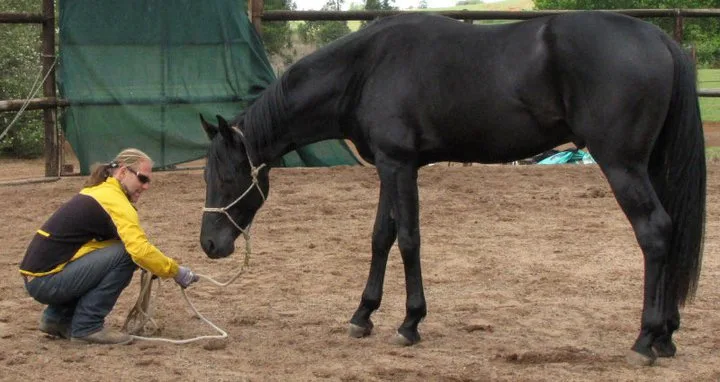
Physical Enrichment Activities
Maintaining a horse’s physical fitness is crucial for their overall well-being. Here are various exercises and activities that contribute to a horse’s physical fitness:
- Regular Riding: Incorporate regular riding sessions into the horse’s routine, varying the gaits and incorporating transitions to engage different muscle groups.
- Lunging: Lunging provides a controlled environment for exercise. It allows the horse to move in circles, encouraging flexibility and building muscle tone.
- Trail Riding: Take horses on trail rides to expose them to different terrains and inclines. This not only provides physical exercise but also mental stimulation.
- Jumping Exercises: For horses trained in jumping, incorporate varied jumping exercises to enhance their cardiovascular fitness and strengthen their hindquarters.
- Ground Pole Work: Set up ground poles or cavaletti exercises to encourage horses to lift their hooves and engage their core muscles, promoting balance and coordination.
- Free Lunging or Liberty Work: Allow horses to move freely in a safe, enclosed area, promoting natural movement patterns and encouraging them to stretch and use their bodies.
- Equine Yoga: Gentle stretching exercises, sometimes referred to as “equine yoga,” can improve flexibility and prevent stiffness, especially beneficial for older horses.
- Hill Work: If available, incorporate hill work into the exercise routine. Uphill and downhill work challenges different muscle groups and aids in building strength.
Regular exercise for a thriving horse
Regular exercise is the cornerstone of a thriving horse, offering a multitude of benefits for their physical and mental well-being. Here’s why regular exercise is so crucial:
- Muscle Tone and Strength: Regular exercise helps build and maintain muscle tone, contributing to a horse’s overall strength and athleticism.
- Cardiovascular Health: Like humans, horses benefit from cardiovascular exercise. It enhances heart and lung function, improving overall cardiovascular health.
- Joint Flexibility: Movement is essential for maintaining joint flexibility. Regular exercise prevents stiffness and promotes healthy joint function.
- Weight Management: Exercise plays a crucial role in weight management. It helps prevent obesity, ensuring a healthy body condition for the horse.
- Mental Well-being: Physical exercise is closely tied to mental well-being. Horses that engage in regular activities are less prone to boredom and stress, leading to a more contented demeanor.
- Prevention of Behavioral Issues: Regular physical activity helps channel a horse’s energy in positive ways, reducing the likelihood of behavioral issues such as cribbing or weaving.
- Enhanced Coordination: Exercises that challenge coordination, such as ground pole work or varied terrain, contribute to a horse’s overall balance and coordination.
- Longevity: Regular exercise is linked to a longer, healthier life for horses. It aids in preventing age-related issues and maintaining overall vitality.
Incorporating a well-rounded exercise routine tailored to the horse’s age, fitness level, and abilities is essential for ensuring they lead a thriving and fulfilling life. Regular physical enrichment not only keeps horses in optimal health but also strengthens the bond between the horse and their caretaker.

Creating an Enriched Environment
Creating a stimulating and safe living environment is crucial for the overall well-being of horses. Here are tips to design an enriched environment:
- Varied Terrain: If possible, provide access to varied terrain in the pasture. Hills, slopes, and different surfaces encourage natural movement patterns and contribute to joint health.
- Shelter Options: Ensure there are shelter options available in the pasture to protect horses from extreme weather conditions, including heat, rain, and cold.
- Social Interaction: Horses are social animals, so consider their social structure when designing living spaces. Provide opportunities for visual and physical contact with other horses.
- Safe Fencing: Install safe and sturdy fencing to prevent injuries. Regularly inspect and maintain fences to address any potential hazards.
- Shade: Ensure there is adequate shade in the pasture to protect horses from the sun. Natural shade from trees or man-made structures can be beneficial.
- Environmental Enrichment: Introduce objects and structures that encourage exploration and interaction. This can include safe toys, scratching posts, or other structures that stimulate curiosity.
- Water Sources: Provide multiple clean water sources to encourage hydration. Ensure that water containers are free from contaminants and regularly cleaned.
- Secure Feed Stations: Place feed stations in safe and accessible locations, minimizing the risk of competition or injury during feeding times.
- Routine Pasture Rotation: Implement a pasture rotation system to allow different areas to recover and promote optimal forage growth. This prevents overgrazing and encourages natural behaviors.
- Natural Vegetation: Maintain and promote natural vegetation in the pasture. This not only contributes to a more natural environment but also provides additional forage options.
Pasture management and turnout time
Pasture management and turnout time are integral components of equine care, offering numerous benefits for a horse’s physical and mental well-being:
- Natural Foraging: Pasture turnout allows horses to engage in natural foraging behavior, promoting a healthier digestive system and preventing boredom associated with stall confinement.
- Exercise and Movement: Turnout time provides horses with the opportunity to move freely, promoting physical exercise and preventing stiffness or muscle atrophy.
- Social Interaction: Horses are social animals, and pasture turnout allows them to interact with other horses. Socialization is crucial for their mental health and contributes to a well-adjusted demeanor.
- Mental Stimulation: The varied environment of a pasture, with its different textures, smells, and sights, provides constant mental stimulation for horses. This helps prevent boredom and encourages exploration.
- Vitamin D Synthesis: Turnout in natural sunlight enables horses to synthesize vitamin D, essential for bone health. Adequate exposure to sunlight contributes to overall wellness.
- Stress Reduction: Pasture turnout can reduce stress associated with confinement. Horses are meant to move and graze, and providing them with this opportunity contributes to a more contented disposition.
- Prevention of Behavioral Issues: Horses turned out regularly are less likely to develop behavioral issues associated with confinement, such as weaving or cribbing.
- Weight Management: Regular turnout helps regulate a horse’s weight by allowing for natural grazing patterns. It is beneficial for preventing obesity and associated health problems.
Incorporating pasture management practices and providing ample turnout time aligns with the natural needs of horses, contributing to their overall health and happiness. A well-managed and enriched environment ensures that horses can exhibit their natural behaviors, fostering a balanced and thriving lifestyle
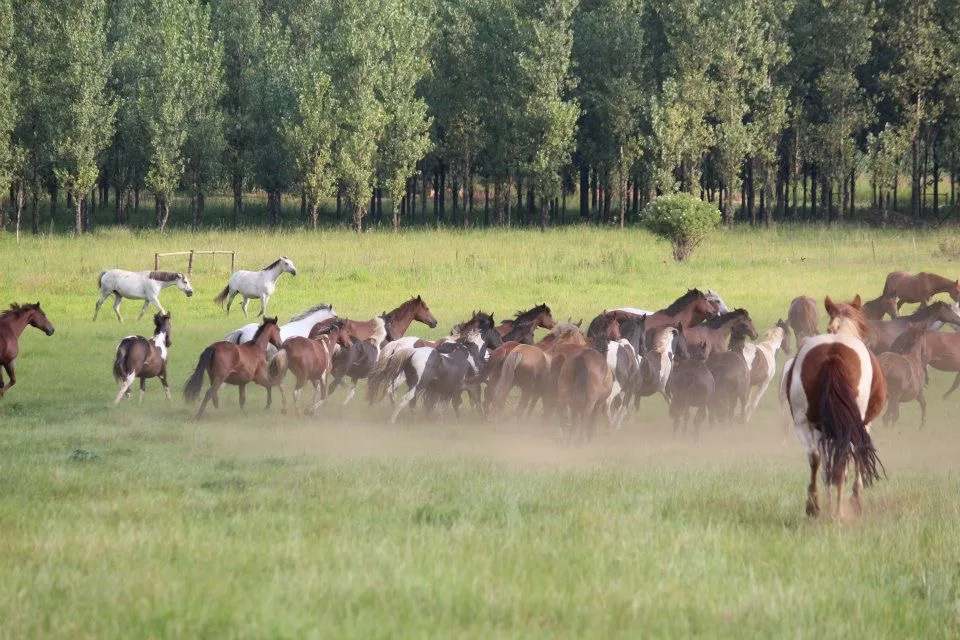
The Role of Social Interaction
Socialization is a fundamental aspect of a horse’s natural behavior and is paramount for their overall well-being. Horses are herd animals with a strong social structure, and social interactions contribute significantly to their mental and emotional health. Here are key points highlighting the importance of socialization for horses:
- Herd Instinct: Horses have an instinct to form bonds and live in groups. The dynamics of a herd provide a sense of security and companionship.
- Communication Skills: Socialization within a herd allows horses to develop and refine their communication skills. They use body language, vocalizations, and other cues to express themselves and maintain social order.
- Mental Stimulation: Interaction with herd members provides ongoing mental stimulation. Horses engage in play, grooming, and mutual observation, keeping their minds active and preventing boredom.
- Emotional Well-being: Social bonds contribute to the emotional well-being of horses. Separation from a companion or the absence of social interaction can lead to stress, anxiety, and behavioral issues.
- Behavioral Development: Foals learn important behavioral cues and manners through interactions with older herd members. Socialization plays a crucial role in the development of appropriate behaviors.
- Sense of Security: Being part of a herd gives horses a sense of security, reducing stress levels. They often feel safer and more relaxed when surrounded by familiar companions.
- Prevention of Undesirable Behaviors: Socially isolated horses may develop undesirable behaviors such as cribbing or weaving. Regular social interaction can help prevent or mitigate these behaviors.

DIY Enrichment Idea
Providing enrichment for horses doesn’t have to be expensive or complicated. Here are some creative and cost-effective DIY enrichment ideas for horse owners:
- Homemade Treat Balls: Create treat balls by filling empty, clean plastic containers with horse-safe treats or chopped fruits and vegetables. Punch holes in the container and hang it in the stable or pasture for the horse to roll and interact with.
- Hay Net Puzzles: Tie a hay net at different heights in the stable or pasture, adding hay or haylage. This encourages natural grazing behavior and provides mental stimulation as the horse works to access the forage.
- DIY Hanging Toys: Craft hanging toys by attaching clean, empty plastic bottles to a sturdy rope. Fill the bottles with small treats, and hang them in the stable. The horse can enjoy rolling, nudging, and trying to get the treats out.
- Sensory Trail: Set up a sensory trail by placing different materials along a designated path, such as rubber mats, textured fabrics, or even shallow pools of water. This encourages the horse to explore and engage their senses.
- Frozen Treats: Freeze horse-safe fruits, vegetables, or even flavored water in a bucket or container. The horse can then lick and nibble on the frozen treats, especially refreshing on hot days.
- DIY Grooming Station: Create a grooming station with different brushes, combs, and grooming tools. This not only keeps the horse’s coat in good condition but also provides tactile stimulation.
- Hanging Vegetable Garland: String horse-safe vegetables, like carrots and apples, on a sturdy rope to create a hanging vegetable garland. Hang it in the stable or pasture for the horse to nibble on.
- Tire Swing: Hang a clean, sturdy tire from a secure beam or tree branch using a strong rope. The horse can push, pull, and swing the tire, providing both physical and mental stimulation.
- DIY Trail Course: Set up a small trail course with natural or improvised obstacles like logs, poles, or cones. This encourages the horse to navigate different challenges, promoting mental engagement and physical exercise.
- Treat Pinata: Create a treat-filled pinata by hanging a hay net filled with treats or haylage. The horse can enjoy batting it around to release the goodies.
Actively participate in your horse’s enrichment
Actively participating in your horse’s enrichment is vital for fostering a strong bond and promoting your horse’s overall well-being. Here are ways to inspire active involvement:
- Get Creative: Think creatively and adapt enrichment ideas based on your horse’s preferences and needs. Experimenting with different materials and treats keeps enrichment activities exciting.
- Observe and Learn: Observe your horse’s reactions to various enrichment activities. Understanding your horse’s preferences and dislikes helps tailor enrichment to suit their personalities.
- Rotate and Vary Enrichment: Regularly rotating and varying enrichment activities is important. This prevents habituation and keeps your horse interested and engaged.
- Join in the Fun: Actively participate in enrichment activities with your horses. Spending quality time together builds trust and strengthens your bond.
- Safety First: Prioritize safety when implementing DIY enrichment ideas. Ensure that the materials used are non-toxic, securely attached, and free from any potential hazards.
- Document and Share: Document enrichment activities through photos or videos and share them with other horse enthusiasts. This can inspire the community and provide new ideas for enriching horses’ lives.
- Stay Informed: Stay informed about the latest research and developments in equine enrichment. This ongoing education helps them continually enhance the well-being of their horses.
By actively participating in their horse’s enrichment, you can create a positive and enriching environment that not only benefits your horse’s physical and mental health but also deepens the bond between you and your horse.

Case Studies
Real-life examples and case studies can provide valuable insights into the positive impact of enrichment practices on horses’ lives. Here are a couple of illustrative case studies:
Case Study 1: “Elevated Well-being through Enrichment”
Background: A 5-year-old Thoroughbred named Rain Maker was transitioning from a racing career to retirement. She exhibited signs of stress, pacing in her stall, and displaying stereotypical behaviors.
Enrichment Intervention: Rain Maker’s owner implemented a comprehensive enrichment program, incorporating daily turnout, socialization with a compatible companion, and introducing slow-feeders for prolonged foraging. Additionally, novel objects and toys were introduced to her environment.
Outcome: Over a few weeks, Rain Maker’s stress levels visibly decreased. She engaged enthusiastically with the novel objects, and her stereotypical behaviors diminished. The combination of physical exercise, social interaction, and mental stimulation through enrichment resulted in a happier and more relaxed mare.
Case Study 2: “Rehabilitation through Enrichment”
Background: ‘Into the Light’, a 15-year-old Quarter Horse, had undergone surgery for a leg injury. During the recovery period, he showed signs of boredom, restlessness, and frustration, hindering the rehabilitation process.
Enrichment Intervention: To address Light’s emotional and physical needs, his owner devised a rehabilitation plan that included hand-walking in varied terrains, introducing sensory obstacles, and implementing positive reinforcement training. Slow-feeders were used to extend feeding time.
Outcome: Light’s rehabilitation progressed more smoothly as he eagerly participated in the enriched activities. The sensory obstacles not only engaged him mentally but also promoted careful, controlled movement. The slow-feeders reduced stall boredom, and Charlie became more cooperative during his recovery, contributing to a successful rehabilitation process.
Success stories of horses benefiting from a well-rounded enrichment program
Success Story 1: “From Anxiety to Contentment”
Background: A 7-year-old Warmblood mare named Luna displayed signs of anxiety and restlessness when stabled for extended periods. Her owner noticed a decline in performance and sought a holistic solution.
Enrichment Intervention: The owner implemented a well-rounded enrichment program that included daily turnout, a companion goat for social interaction, and a rotation of stimulating toys. Luna’s diet was supplemented with slow-feeders and forage balls to encourage natural feeding behaviors.
Outcome: Within a few weeks, Luna’s anxiety visibly decreased. She engaged enthusiastically with the enrichment items, and her performance improved. The introduction of a companion and the varied enrichment activities contributed to a more content and focused mare.
Success Story 2: “Senior Horse Thrives with Enrichment”
Background: An 18-year-old senior gelding named Maximus showed signs of lethargy and stiffness. His owner was concerned about his overall well-being and sought ways to enhance his golden years.
Enrichment Intervention: Max’s owner introduced a senior-friendly exercise routine, including gentle ground exercises and short trail rides. Enrichment activities such as slow-feeders with added herbs, and a grooming station with massage tools were incorporated to support his physical and mental health.
Outcome: Max demonstrated increased vitality and flexibility. The combination of tailored exercise, sensory enrichment, and targeted grooming improved his overall demeanor. Max’s success story highlighted the importance of adapting enrichment practices to suit the specific needs of senior horses.
These case studies and success stories underscore the positive outcomes achievable through thoughtful and well-rounded enrichment practices. They emphasize the importance of tailoring interventions to individual horses, considering their age, health status, and unique personalities to promote a thriving and content equine life.
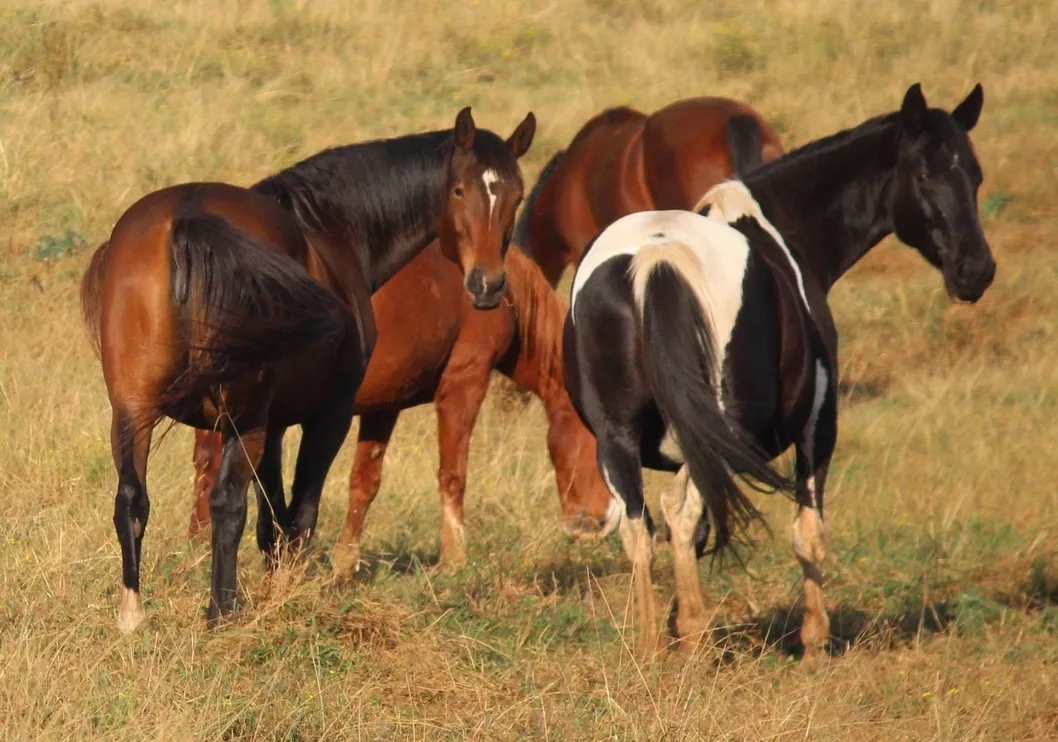
Conclusion
Throughout this exploration of horse enrichment, several key points have been highlighted:
- Equine Enrichment Overview: Equine enrichment is a holistic approach to horse care that addresses the mental and physical well-being of horses by providing activities, environments, and social interactions that simulate their natural behaviors.
- Mind-Body Connection: The intricate connection between a horse’s mental and physical health is fundamental. Mental well-being influences physical health, and vice versa, emphasizing the importance of a balanced approach to care.
- Understanding Equine Behavior: Recognizing and understanding natural horse behaviors is crucial for tailoring enrichment activities that fulfill their instinctual needs for socialization, exploration, and mental stimulation.
- Mental Stimulation: Engaging horses mentally through various activities and toys prevents boredom, reduces stress, and contributes to more content and stimulated equine companion.
- Physical Enrichment Activities: Regular physical exercise is essential for maintaining a horse’s physical fitness, preventing health issues, and promoting overall vitality.
- Creating an Enriched Environment: Designing a stimulating and safe living environment involves considering factors such as varied terrain, shelter options, social interaction, and providing opportunities for natural behaviors.
- The Role of Social Interaction: Socialization is integral to a horse’s well-being, and introducing new horses to a herd requires a gradual and monitored approach to foster positive social dynamics.
- DIY Enrichment Ideas: Cost-effective and creative DIY enrichment ideas offer horse owners practical ways to enhance their horse’s mental and physical health, promoting a fulfilling and stimulating environment.
- Case Studies: Real-life examples and success stories demonstrate the positive impact of enrichment practices, showcasing how thoughtful interventions can lead to happier, healthier horses.
Incorporate enrichment into your horse care routines for a thriving, happy equine companion
Enrichment is not just a bonus but a fundamental aspect of responsible equine ownership. By embracing the principles discussed in this blog, horse owners have the power to:
- Enhance the mental and physical well-being of their horses.
- Strengthen the bond between horse and caretaker through shared enrichment activities.
- Prevent stress, boredom, and associated undesirable behaviors.
- Promote a thriving and content equine companion that exhibits natural behaviors and enjoys a fulfilling life.
Remember, each horse is unique, and tailoring enrichment practices to their individual needs ensures the greatest success. Whether it’s introducing new toys, varying exercise routines, or creating a socially dynamic environment, the effort invested in equine enrichment pays off in the form of a happier, healthier, and more vibrant horse. As caretakers, let us commit to providing our equine companions with the enriched lives they deserve, fostering a partnership based on mutual well-being and shared joy.
Further reading
Enrichment The Mare and Foal Sanctuary
Enrichment simply means that we provide a more stimulating environment for our horses, to help improve their mental and physical wellbeing, by stimulating their …
12-ways-improve-mental-stimulation-horses
